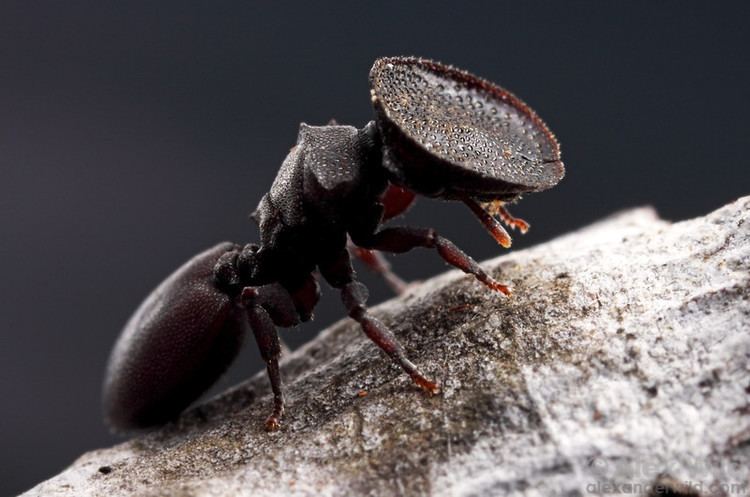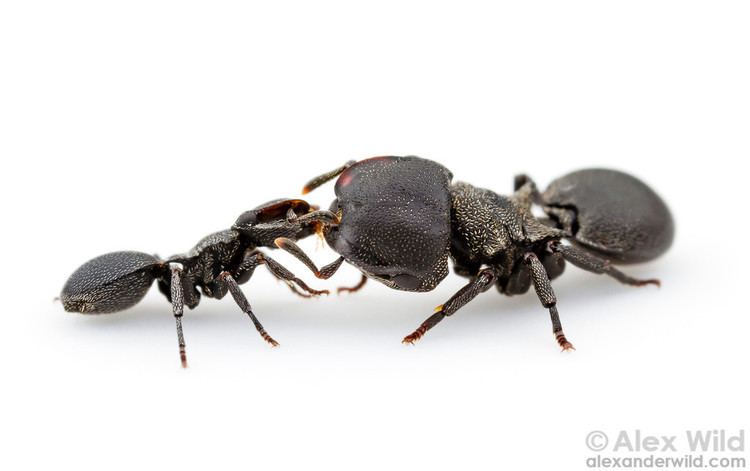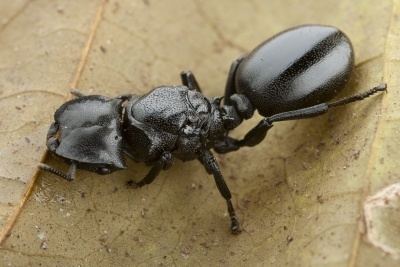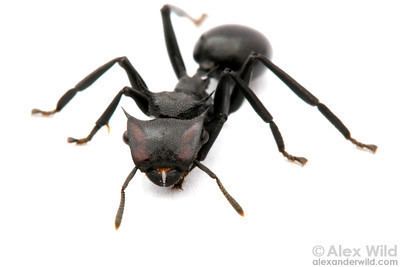Scientific name Cephalotes Rank Genus | Suborder Apocrita Higher classification Cephalotini | |
 | ||
Similar Ant, Insect, Cephalotes atratus, Mirror turtle ant, Cephalotes varians | ||
Poisonous ants insects cephalotes atratus gliding ants
Cephalotes is a Neotropical genus of tree-dwelling ant species, commonly known as turtle ants. All appear to be gliding ants, with the ability to "parachute" and steer their fall so as to land back on the tree trunk rather than fall to the ground, which is often flooded.
Contents
- Poisonous ants insects cephalotes atratus gliding ants
- Ants poisonous insects cephalotes atratus gliding ants
- Ecological specialization and evolution of a soldier caste
- References

Ants poisonous insects cephalotes atratus gliding ants
Ecological specialization and evolution of a soldier caste

One of the most important aspects of the genus' social evolution and adaptation is the manner in which their social organization has been shaped by environmental pressures. This is particularly true of the species Cephalotes rohweri, in which an entire soldier class has evolved as a result of highly specialized nest cavity availability.
Because ants within Cephalotes use multiple carved nesting cavities found in the trees upon which they live, a cohort of morphologically specialized soldiers has evolved to defend these nesting cavities. They use their unique plate-like heads to block the entrances to the nests, essentially creating a living door to the nest cavities.

In one particular study, Scott Powell tested the current hypothesis that "specialized use of cavities with entrances close to the area of one ant head has selected for a morphologically and behaviorally specialized soldier in Cephalotes." This was accomplished by performing comparative studies between four Cephalotes species, each representing one of the four character states of soldier evolution. Cephalotes was ideal for the study because it is the only genus to contain extant species displaying four levels of major morphological evolution. These character states are:

- No soldier present (ancestral)
- Soldiers present with simple domed head
- Soldiers present with incomplete head-disk
- Soldiers present with complete head disk (most advanced)
Another study by Powell examined the process by which environmental factors shape colonial castes within the worker class. However, this study focused more on how colonies adapt their caste systems to ecological factors in their environment.
For the experiment, a species of the Cephalotes genus was used that displayed the highest level of soldier specialization. Three key findings regarding adaptive caste specialization were supported:
- Soldiers were best at defending the specific nesting resource found in nature.
- Colonies used only certain nests (out of all the available nests), and selected only the nesting sites that would maximize soldier performance.
- Soldier performance and limitations had both direct and indirect effects on colony reproduction.
The results of this experiment support the concept that the most specialized soldier phenotype in Cephalotes is a result of adaptation to ecological specialization within a narrow subset of available nests
